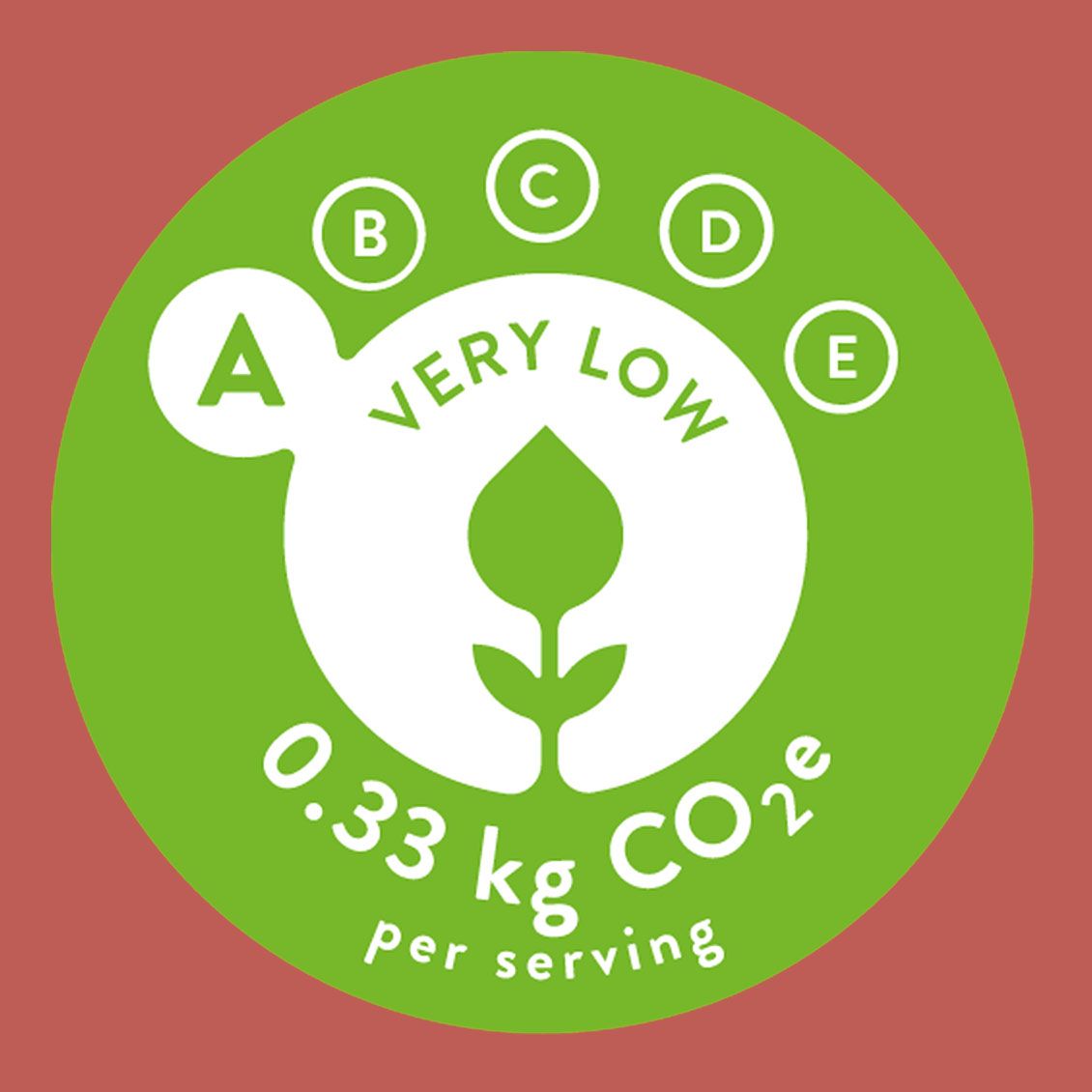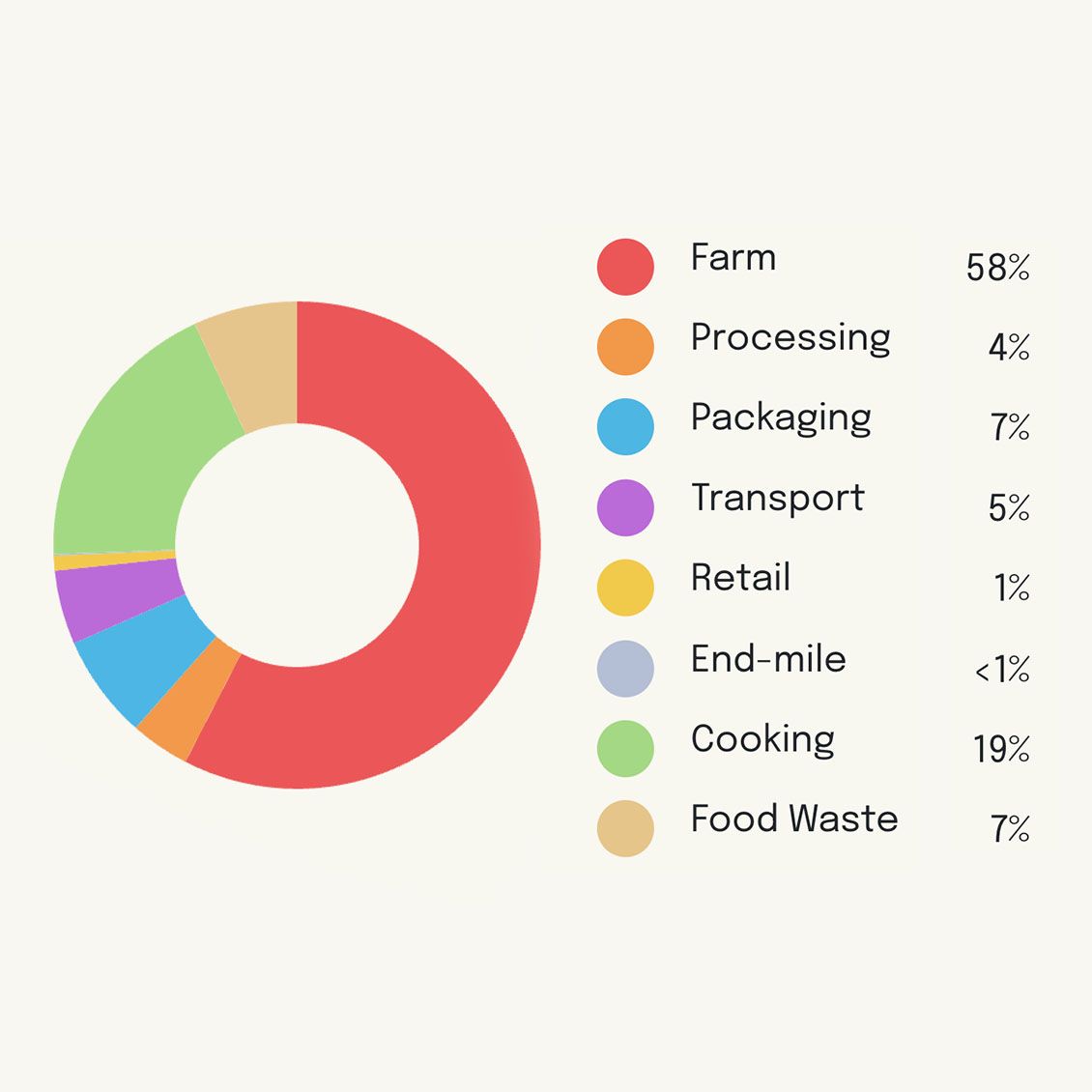VEGAN LENTIL RAGU
Did you know that by opting for the Vegan Lentil Ragu over the Bolognese, you could reduce the carbon footprint of your meal by 82%? Keep reading to find out more about how we calculate the carbon footprint of our meals and why 60% of our menu is low or very low in carbon.
VERY LOW CARBON
This pasta dish is VERY LOW carbon with 0.33 kg CO2.
The Vegan Lentil Ragu is an A-rated item in terms of its carbon footprint. This means that it fits within your daily allowance for carbon and is aligned to the Paris Agreement pledge of keeping global warming well below 2°C, aiming for 1.5°C.
The labels display the carbon footprint per serving of each food item, measured in kilograms of CO2-equivalent (kg CO2e). CO2-equivalent. The labels separate food items by five impact ratings – ranging from A to E – indicating a footprint score from ‘Very Low’ to ‘Very High’. Each of the ratings correlates to a traffic light colour, helping to guide users towards more sustainable food choices. The level of impact is assigned based on the carbon intensity (carbon footprint per kilogram) of the food item.
Life-cycle Assessment (LCA) Data
58% of the carbon footprint of this dish comes from farming the ingredients and 19% comes from the cook process.
The carbon footprint of food items is calculated from cradle-to-grave, so starting from the emissions of production of all inputs to the farm, and going right through to the emissions from disposal of any waste at the end of the life-cycle.
Foodsteps uses leading Life-cycle Assessment (LCA) data to account for the impacts at each stage of a food’s life cycle including farming, packaging, processing, transport, retail, cooking and waste. The LCA values are largely based on a meta-analysis by Poore and Nemecek (2018) as well as subsequent research.
The carbon footprint of food items is calculated to reflect average British consumption, using international trade data to map where food in the UK is typically sourced from over a year.
THE LENTIL THINGS IN LIFE
The real hero ingredient in this Vegan Lentil Ragu sauce is the lentils. Part of the legume family, these pulses are great for building soil fertility and have nitrogen-fixing properties.
Fixing nitrogen makes the soil richer which in turn helps plants to grow and encourages biodiversity. Pulses also sequester carbon which is considered by some climate scientists a possible key to cutting greenhouse gas emissions. Additionally, these hardy crops can thrive in a whole range of terrains and climates, and require a relatively low amount of water. The great news is that whilst they are working hard for the environment they are also a great source of protein and fibre, and a delicious element in this rich ragu.
What is kg CO2e?
Carbon footprint refers to the greenhouse gas emissions emitted during a product’s life cycle, and is measured in kilograms of carbon dioxide equivalents (kg CO2e).
Carbon dioxide equivalent (kg CO2e) means that other greenhouse gas emissions, such as methane (CH4) and Nitrous Oxides (NOx) have been converted into CO2e by comparing the relative global warming potential of the different greenhouse gases over a 100-year period.




